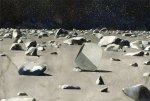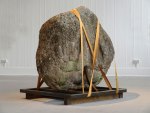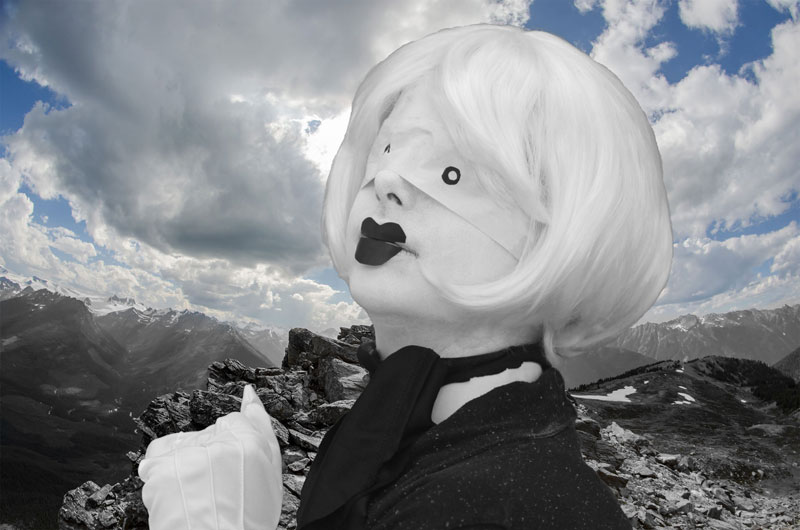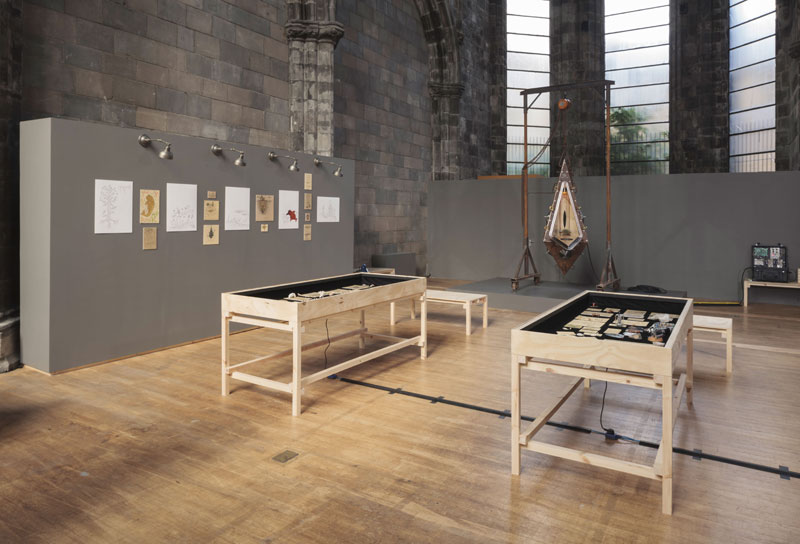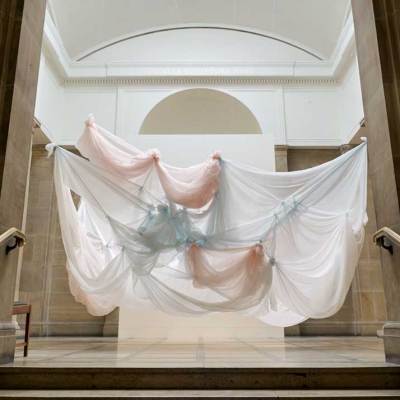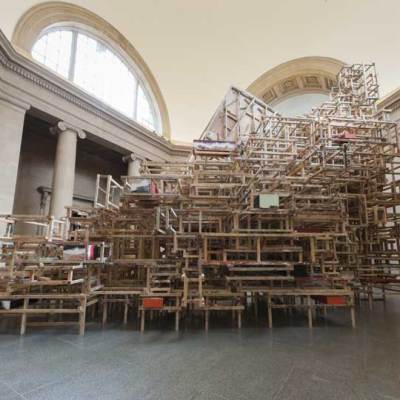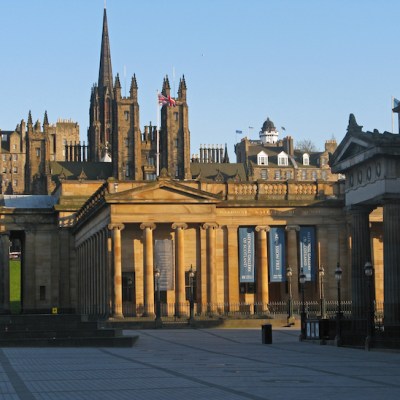As with wine, so too with art festivals: the 2015 vintage of the Edinburgh Art Festival is, alas, not much to write home about. This is hardly surprising after last year’s incarnation, the biggest and buzziest to date, with over 100 artists exhibiting as the art festival coincided with Generation, a nationwide celebration of the last 25 years of contemporary art in Scotland. While this year feels a little lacklustre, there are nevertheless a few things worth seeking out. While you’re in Edinburgh, the Jean-Etienne Liotard at the Scottish National Gallery is also worth a visit.
Five to see
set (2015), Phyllida Barlow. Installation view at The Fruitmarket Gallery, Edinburgh 2015. Courtesy the artist and Hauser & Wirth. Photo: Ruth Clark
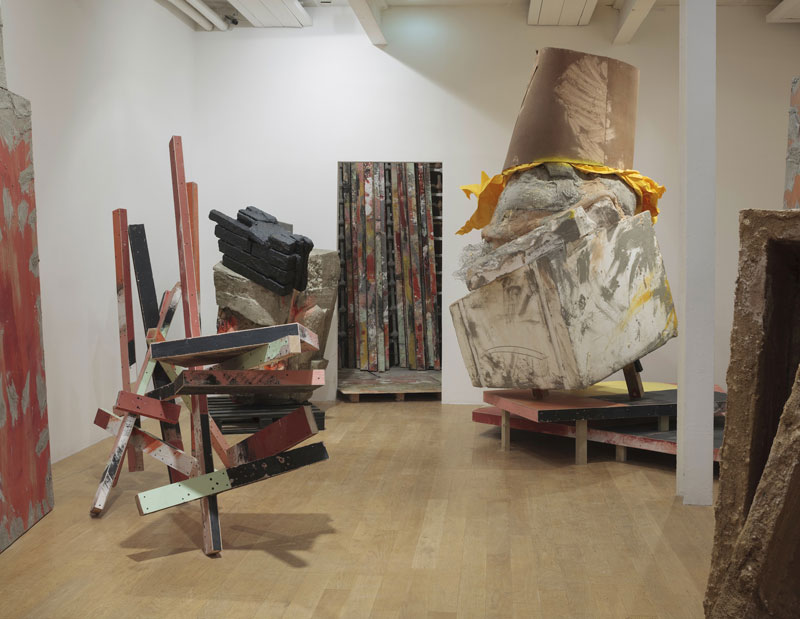
Phyllida Barlow, set, The Fruitmarket Gallery
The work of Phyllida Barlow does very little for me, so it feels peculiar to place this exhibition at the top of my list of recommendations: but out of everything I saw at the EAF this was the best conceived and best executed. The installation is impressive in scale, with the entire gallery ‘turned upside down’ (as the artist’s brief instructed) by Barlow’s sculptural shapes, piles of stuff and impenetrable structures. It may not have provoked in me much internal reflection, but there’s no denying that it is very well done indeed.
Platform: 2015, 9–11 Blair Street
Platform is a new initiative of the EAF that provides a charming space for early-career artists to participate in the festival programme. This year’s four artists – Antonia Bañados, Ben Callaghan, Ross Hamilton Frew, and Jessica Ramm – were chosen by a panel of selectors following an open call. Particularly eye-catching are Bañados’s lovely watercolour space-scapes, inspired by the Atacama Desert of her Chilean homeland. In Ramm’s witty video, Hand Over Foot, four climbers awkwardly manoeuvre around a large, sculptural metal sphere (which resembles an outdated model of the atom) fitted with rock-climbing holds. The sphere itself sits like a piece of inorganic taxidermy inside the gallery – a strange, intriguing echo.
Emma Finn, Double Mountain, the St James Centre
I had never seen the work of Emma Finn work before, but I daresay I’ll have no trouble identifying it in the future, for her style is incredibly distinctive. Double Mountain, commissioned especially for the Festival, plays in an empty shop in the St James Centre. Finn’s film combines a number of aesthetic influences – early silent movies, Victoriana, perhaps even Fascist military costumes – to create something at once unusual and familiar. My only complaint is with the stilted, simplistic, occasionally trite voice-over. One wonders how an artist with the courage to send these peculiar filmic creatures out into the world should also feel the need to retain the conventions of traditional storytelling.
Ariel Guzik, Holoturian, Trinity Apse
I remember seeing Guzik’s Cordiox installation for Mexico at the 55th Venice Biennale and being distinctly underwhelmed. Holoturian reprises Guzik’s interest in sound, but gives it a tighter focus on cetacean communication, and is helped by the smaller space of the glorious Trinity Apse. (It’s worth visiting to gawp at the church alone, which is normally given over to the Brass Rubbing Centre). The holoturian is a small capsule that houses both a stringed musical instrument and – a nice touch – a cactus, to act as an emissary of humans to the cetacean world. The effect is soothing and meditative, if a little steampunk/Verne-esque in its aesthetic. Nevertheless, worth a visit.
Reciprociti, Royal Bank of Scotland
This is an old project, but one which benefits immeasurably from its new location inside a branch of the Royal Bank of Scotland on Princes Street. Designer Patrick Stevenson-Keating presented his re-imagined financial system at London’s Design Museum last year as the culmination of his time on the Designers in Residence programme. Reciprociti is an imaginary bank based on the idea of a fluctuating currency and its impact on spending habits and social behaviours. Here, banknote values change over time and double-sided debit cards can be used to indicate favour or disfavour towards specific companies. The decision to take the exhibition out of a museum and into a busy, high street branch of a major bank is provocative and subtly disruptive.
And two to miss…
Marvin Gaye Chetwynd, The King Must Die, Old Royal High School
According to the programme, this new ‘performative installation’ – another commission made especially for the Festival – takes its inspiration from Mary Renault’s historical novels and the work of Czech stage scenographer, Josef Svoboda. As far as I could tell the installation (there are only a handful of performances) was little more than reams of butcher paper covering every surface in the school’s spectacular debating chamber, with candy pink lighting and ear-splitting disco music. Go, but only to look around the wonderful old school building.
Hanne Darboven, accepting anything among everything, Talbot Rice Gallery
I can’t in good faith suggest you give this exhibition a miss, because I wasn’t actually able to see it myself. Feeling somewhat ambivalent about our prospects for encountering quality art, I took a friend along for a look. We were turned away at the door and instructed that, due to an ‘incident’, the gallery would remain closed for four days. (It’s open again now though)
The Edinburgh Art Festival runs until 30 August at various venues throughout the city.

